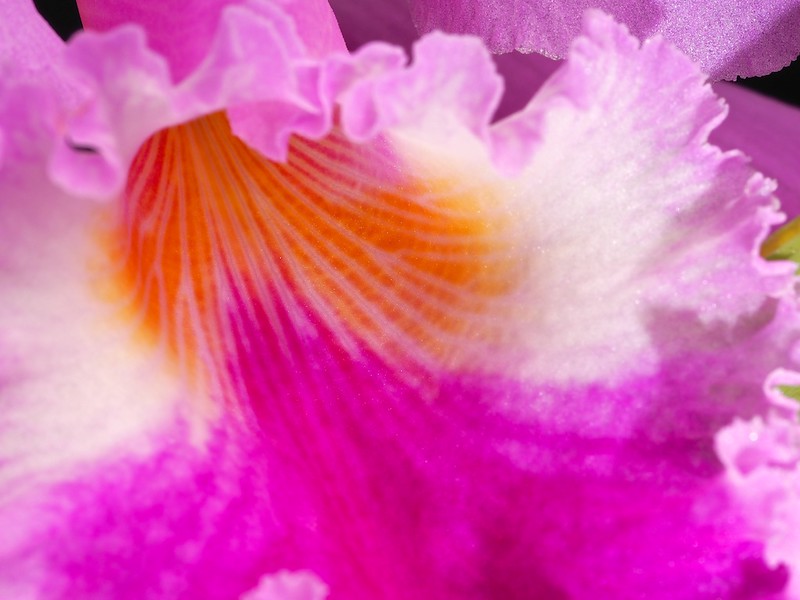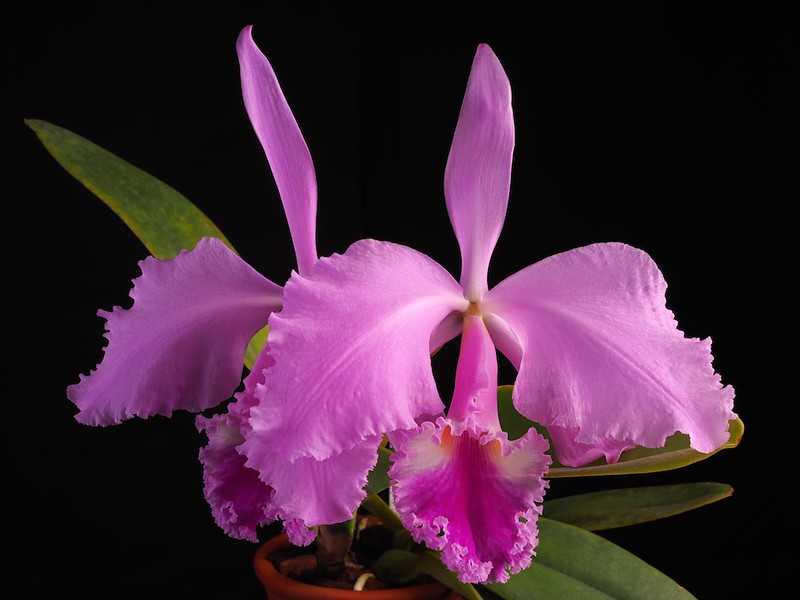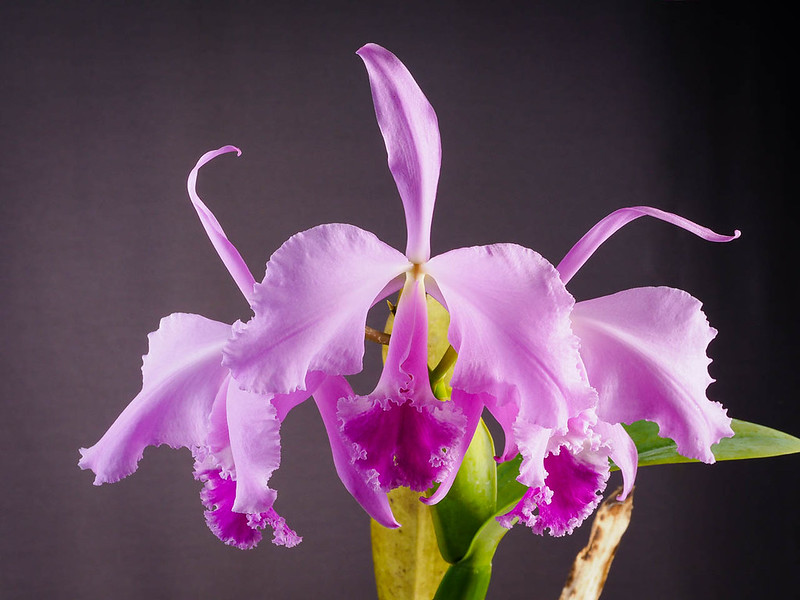
This one flowered out-of-season. This species is supposed to flower in the spring to early summer. But since it is a recent import from Brazil, its clock hasn't been reseted yet. I received it in May 2015 from Bela Vista Orchids of Brazil. Transition from the southern hemisphere to the northern hemisphere could be interesting for plants. Generally, most orchids seem to reset the clock within a year or so.
Cattleya warneri is closely related to Cattleya labiata. One of the main differences is the flowering time: C. warneri flowers in the spring and C. labiata flowers in the fall. Also the geographic distributions are separated. C. warneri is found in South Bahia, Esprito Santo (the center of the distribution) and Minas Gerais. Earlier, this species was also found in Rio de Janeiro. On the other hand, C. labiata shows a more northern distribution (Ceará, Paraíba, Pernambuco, Alagoas). Here is a wikipedia page about the States of Brazil, which includes a Brazilian map. The geographic distributions I mentioned here are from a special issue of Orchid Digest (April-May-June issues from 1992): Cattleya warneri T. Moore by L. C. Menezes. There is also an interesting discussion about whether these two species are really separate species in this issue. Although this issue is only 49 pages, it contains lots of interesting information about this species. For $5, it is a great deal for Cattleya enthusiasts!
Mine was labelled as C. warnerii amoena 'D. Lena' x amesiana 'mº R. Kaustky' (S5777). But I think this is the abbreviation of C. warnerii amoena 'Dona Lena' x amesiana 'Memoria Roberto Kautsky'. amoena is a form with white flowers and the central part of the lip has faint rose-flesh color. amesiana is a form with whitish flowers, but generally more pinkish than amoena. Interestingly. the crossing of these two forms ended up with deeper pink than either parents.
Chadwick & Son has a very informative article about the historical account of this species as well as its culture.


Update: August 25, 2016.
The clock doesn't seem to be reset in the second season. In 2015, it flowered in September 15, and it is a bit earlier this year, but it is still out-of-season bloom. Or is this actually C. labiata? The growth cycles of these two similar species are supposed to be different. The new growth of C. warneri starts in fall and matures during winter. It is a spring bloomer and the roots of the new pseudobulbs grow after the bloom. On the other hand, C. labiata initiates growths in the spring, and blooms in the fall. Roots grow before the bloom. Here is a link to the cheat sheet of Cattleya bloom time. This plants flowers in a wrong time of the year, but the roots start to grow after, not before, the bloom. Since it's been in the grow tent, and isolated from light cycle (I have been using constant 13 hours per day, it may be taking longer time to re adjust the clock. But many other orchids in the grow tents bloom in the correct time, probably sensing the changes in the temperature. We'll see how it grows for the next year.
 |
| Update: flowers in 2016 |
Update: March 26, 2019
It flowere in the fall in the first two years after import. In 2017, I think it didn't flower (or I missed the record). But it started to flower in the normal time (spring) starting in 2018. The bloom of 2019 was the best so far. I haven't measured the size, but the flower seems to be bigger and it made 5 flowers this year. Unfortunately, the photos below were taken after their prime time, and show botrytis like brown spots. The color is quite different between the years, but I thnk the color of this year seems to be the closest, especially the whole plant shot.
 |
| flowers in 2019 |
 |
| whole plant, 2019 |
I have the same problem with my c. warneri "do suzuki' x self. It blooms every year in late summer. This season started to bloom early, in the end of august. I don't understand if it's a true warneri or a labiata, however it's strong and beautiful!
ReplyDelete